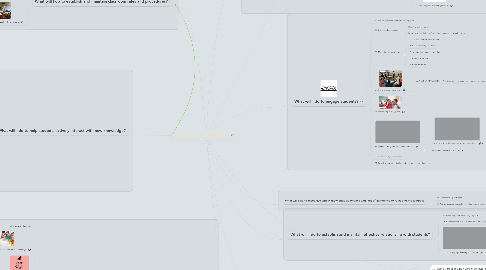
1. What will I do to establish and communicate learning goals, track student progress and celebrate success?
1.1. 1. Providing clear learning goals and scales
1.2. 2. Tracking student progress
1.3. 3. Celebrating success
2. What will I do to establish and maintain classroom rules and procedures?
2.1. 4. Establishing classroom routines
2.2. 5. Organizing the physical layout of the classroom
3. What will I do to help students actively interact with new knowledge?
3.1. 6. Identifying critical information
3.1.1. ***Critical input-experiences
3.2. 7. Organizing students to interact with new knowledge
3.2.1. ***Divide students into small groups
3.3. 8. Previewing new content
3.4. 9.chunking content into "digestible bites"
3.5. 10. Processing new information
3.6. 11.Elaborating on new information
3.6.1. ***Ask students questions
3.7. 12. Recording and representing knowledge
3.7.1. Ex: graphic organizers, dramatic enactments, & mnemonic devices
3.7.2. Please Excuse My Dear Aunt Sally
3.8. 13. Reflecting on learning
4. What will I do to help students practice and deepen their understanding of new knowledge?
4.1. 14. Reviewing of content
4.2. 15. Organizing students to practice and deepen knowledge
4.3. 16. Using homework
4.4. 17. Examining similariites and differences
4.4.1. Ex: Comparing
4.4.2. Ex; Metaphors
4.4.3. Ex: Analogies
4.5. 18. Examining errors in reasoning
4.5.1. 4 errors [ Faulty logic, attacks, weak reference, & misinformation]
4.6. 19. Practicing skills, strategies, and processes
4.7. 20. Revising knowledge
5. 37. Using verbal and non verbal behaviors that indicate affection for students
6. What will I do to help students generate and test hypotheses about new knowledge?
6.1. 21. Organizing students for complex tasks
6.2. 22. Engaging students in complex tasks involving hypothesis
6.2.1. Ask students to observe physical or psychological phenomenon
6.2.2. formulate a hypotheses on given topic
6.2.3. ask student to collect data and then test hypothese
6.2.4. Lastly, allow the student to explain the changes in the initial thought
6.3. 23. Providing resources and guidance
7. What will I do to engage students?
7.1. 24. Noticing when students are not engaged
7.2. 25. Using academic games
7.2.1. http://www.abcya.com/
7.2.2. http://www.teachhub.com/engaging-classroom-games-all-grades
7.3. 26. Managing response rates
7.3.1. * POst-teacher question wait time
7.3.2. * Within- student pause time
7.3.3. * Post- student- response wait time
7.3.4. * Teacher pause time
7.3.5. * Impact pause time
7.4. 27. Using physical movement
7.4.1. Ex:: VOTE WITH YOUR FEET --Post 3 signs in your classroom; The answer is correct, the answer is incorrect, the answer is partially correct. ASk THE question and allow students to get up and go to the sign that is accurate.
7.5. 28. Maintaining a lively place
7.6. 29. Demonstrating intensity and enthusiasm
7.6.1. 35. Acknowledge adherence to rules and procedures
7.6.2. THE POWER OF WHAT THIS CAN DO!
